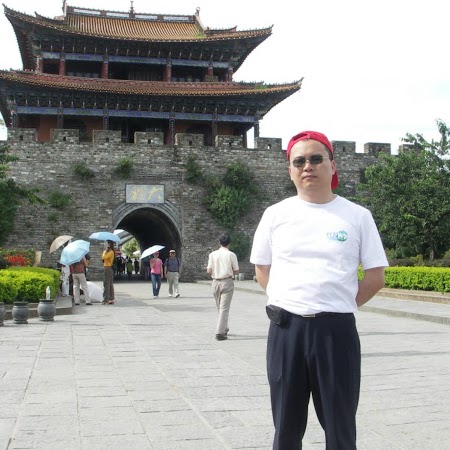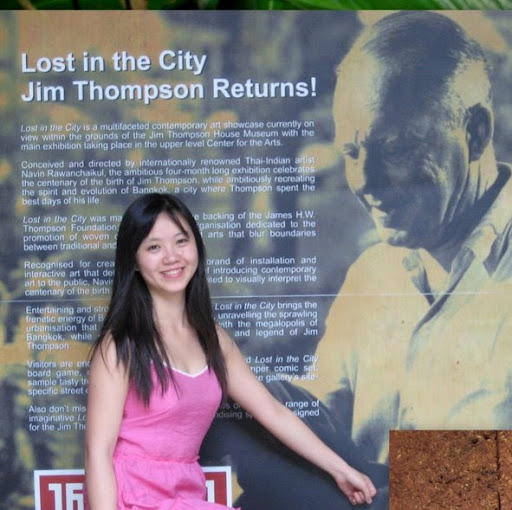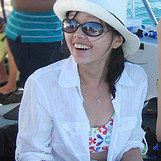Qing I Li
age ~69
from Hackensack, NJ
- Also known as:
-
- Qing Pan Li
- Phone and address:
- 61 Linden St, Hackensack, NJ 07601
Qing Li Phones & Addresses
- 61 Linden St, Hackensack, NJ 07601
- 847 Belle Ave, Teaneck, NJ 07666 • 2013572073
- 116 Dean Dr, Tenafly, NJ 07670
- Marietta, GA
- Berlin, NJ
- Redlands, CA
- Fairview, NJ
- Duluth, GA
Resumes

Qing Li Hoboken, NJ
view sourceWork:
Stevens Institute of Technology
Aug 2009 to 2000
Research & Teaching Assistant Accenture Executive Data Analytic Workshop
Hoboken, NJ
Sep 2014 to Sep 2014
Teaching Fellow MTA New York City Transit, Office of the President
New York, NY
Jan 2014 to Aug 2014
Data Science Support Aide Tecnolgico de Monterrey
Guadalajara, Jal.
Dec 2013 to Dec 2013
Teaching Fellow Lloyd's Register
Southampton
Jul 2013 to Sep 2013
Visiting Scholar, Global Technology Centre United Nations Headquarters, Dept of Economics and Social Affairs
New York, NY
Jan 2009 to Jun 2009
Intern, Population Division
Aug 2009 to 2000
Research & Teaching Assistant Accenture Executive Data Analytic Workshop
Hoboken, NJ
Sep 2014 to Sep 2014
Teaching Fellow MTA New York City Transit, Office of the President
New York, NY
Jan 2014 to Aug 2014
Data Science Support Aide Tecnolgico de Monterrey
Guadalajara, Jal.
Dec 2013 to Dec 2013
Teaching Fellow Lloyd's Register
Southampton
Jul 2013 to Sep 2013
Visiting Scholar, Global Technology Centre United Nations Headquarters, Dept of Economics and Social Affairs
New York, NY
Jan 2009 to Jun 2009
Intern, Population Division
Education:
Stevens Institute of Technology
Hoboken, NJ
2009 to 2015
PhD. in Systems Engineering Stevens Institute of Technology
Hoboken, NJ
2007 to 2009
M.S. in Financial Engineering Xi'an University of Technology
Xi'an, China
B.S. in Information and Computing Science
Hoboken, NJ
2009 to 2015
PhD. in Systems Engineering Stevens Institute of Technology
Hoboken, NJ
2007 to 2009
M.S. in Financial Engineering Xi'an University of Technology
Xi'an, China
B.S. in Information and Computing Science
Skills:
Programming: Python, SQL, C#, C++, JavaScript, D3.js<br/> Statistical Programming: R, SPSS, Minitab, Tableau<br/> Simulation: MATLAB Simulink, Arena, AnyLogic<br/> Others: MS Office Suite (Word, Excel, PowerPoint, Project, Visio), IBM Maximo<br/> Languages: Mandarin Chinese, English

Qing Li
view sourceWork:
PregPrep (Start-up)
Oct 2014 to 2000
Digital Marketing Manager The American Friends of Jamaica, Inc
Sep 2014 to 2000
Accountant Food Distribution in NYC
Sep 2014 to 2000
Volunteer Deere & Company
Jul 2014 to 2000
Entrepreneur/ Business Owner BMW Automotive Ltd
Jun 2013 to Jun 2014
Financial Assistant
Oct 2014 to 2000
Digital Marketing Manager The American Friends of Jamaica, Inc
Sep 2014 to 2000
Accountant Food Distribution in NYC
Sep 2014 to 2000
Volunteer Deere & Company
Jul 2014 to 2000
Entrepreneur/ Business Owner BMW Automotive Ltd
Jun 2013 to Jun 2014
Financial Assistant
Education:
Northeastern University
Shenyang, CN
Sep 2010 to Jun 2014
Bachelor of Business Administration New York University
New York, NY
M.S. in Integrated Marketing
Shenyang, CN
Sep 2010 to Jun 2014
Bachelor of Business Administration New York University
New York, NY
M.S. in Integrated Marketing

Qing Li Clark, NJ
view sourceWork:
Biometrician, Merck & Co., Inc
Dec 2010 to 2000 Merck & Co., Inc
Rahway, NJ
Jun 2010 to Aug 2010 Department of Mathematics, Washington University in St. Louis
2009 to 2009
Research assistant Cellular Injury and Adaption Laboratory, Washington University Medical School
2006 to 2006
Research assistant
Dec 2010 to 2000 Merck & Co., Inc
Rahway, NJ
Jun 2010 to Aug 2010 Department of Mathematics, Washington University in St. Louis
2009 to 2009
Research assistant Cellular Injury and Adaption Laboratory, Washington University Medical School
2006 to 2006
Research assistant
Education:
Washington University in St. Louis
St. Louis, MO
Jan 2005 to Jan 2010
Ph.D. in Mathematics (Concentrated on Statistics)
St. Louis, MO
Jan 2005 to Jan 2010
Ph.D. in Mathematics (Concentrated on Statistics)
Medicine Doctors

Qing E Li, Flushing NY - DPT (Diphtheria, pertussis, tetanus)
view sourceSpecialties:
Physical Therapy
Acupuncture
Acupuncture
Address:
14105 Northern Blvd Suite 6F, Flushing, NY 11354
Languages:
English

Qing Li
view sourceSpecialties:
Internal Medicine
Work:
Medstar Internal Medicine
9000 Franklin Sq Dr, Rosedale, MD 21237
4437776873 (phone), 4437778344 (fax)
9000 Franklin Sq Dr, Rosedale, MD 21237
4437776873 (phone), 4437778344 (fax)
Languages:
English
Description:
Ms. Li works in Rosedale, MD and specializes in Internal Medicine.

Qing K. Li
view sourceSpecialties:
Anatomic Pathology & Clinical Pathology
Work:
South Bend Medical FoundationSouth Bend Medical Foundation Pathology
530 N Lafayette Blvd, South Bend, IN 46601
5742344176 (phone), 5742341561 (fax)
530 N Lafayette Blvd, South Bend, IN 46601
5742344176 (phone), 5742341561 (fax)
Languages:
English
Description:
Dr. Li works in South Bend, IN and specializes in Anatomic Pathology & Clinical Pathology. Dr. Li is affiliated with Memorial Hospital Of South Bend.
Isbn (Books And Publications)



Advances In Web-age Information Management: 5th International Conference, WAIMN 2004, Dalian, China, July 15-17, 2004, Proceedings
view sourceAuthor
Qing Li
ISBN #
3540224181

Advances In Web-based Learning-icwl 2004: Third International Conference, Beijing, China, August 8-11, 2004, Proceedings
view sourceAuthor
Qing Li
ISBN #
3540225420

Advances in Web-based Learning- ICWL 2005: 4th International Conference, Hong Kong, China, July 31 - August 3, 2005, Proceedings
view sourceAuthor
Qing Li
ISBN #
3540278958

Advances in Knowledge Discovery and Data Mining: 5th Asia-Pacific Conference, Pakdd 2001 Hong Kong, China, April 16-18, 2001 Proceedings
view sourceAuthor
Qing Li
ISBN #
3540419101

Advances in Web-Based Learning: First International Conference, Icwl 2002, Hong Kong, China, August 2002 Proceedings
view sourceAuthor
Qing Li
ISBN #
3540440410

Advances in Web Based Learning - ICWL 2006 : 5th International Conference, Penang, Malaysia, July 19-21, 2006: Revised Papers
view sourceAuthor
Qing Li
ISBN #
3540490272
Name / Title
Company / Classification
Phones & Addresses
President
International Business Solutions Group Inc
Ret Radio/TV/Electronics
Ret Radio/TV/Electronics
88 E Broadway, New York, NY 10002
2129251886
2129251886
President
Li's Red Bowl, Inc
3980 Boat Clb Rd, Fort Worth, TX 76135
3103 Canongate Dr, Arlington, TX 76015
148 Madison St, New York, NY 10002
3103 Canongate Dr, Arlington, TX 76015
148 Madison St, New York, NY 10002
Owner
Cd International Co
Prepackaged Software Services
Prepackaged Software Services
88 E Broadway, New York, NY 10002
2129251886
2129251886
Director, President
Li's Best Buffet Inc
17 E Broadway, New York, NY 10002
3980 Boat Clb Rd, Fort Worth, TX 76135
3980 Boat Clb Rd, Fort Worth, TX 76135
Principal
Hong Li Chinese Restaurant
Eating Place
Eating Place
1821 Pitkin Ave, Brooklyn, NY 11212
Principal
Francesca Chinese Restaurant
Eating Place
Eating Place
2411 Bergenline Ave, Union City, NJ 07087
2013480066
2013480066
Chairman
LE VINCE BEAUTY CENTER INC
Beauty Shop
Beauty Shop
264 Canal St #3E, New York, NY 10013
264 Canal St 3F, New York, NY 10013
9172913382
264 Canal St 3F, New York, NY 10013
9172913382
Owner, Principal
Great Wall
Whol General Groceries
Whol General Groceries
6472 Dry Hbr Rd, Flushing, NY 11379
Us Patents
-
Nr Sidelink Group Communication
view source -
US Patent:20220386081, Dec 1, 2022
-
Filed:Aug 13, 2020
-
Appl. No.:17/628761
-
Inventors:- Wilmington DE, US
Pascal M. ADJAKPLE - Great Neck NY, US
Qing LI - Princeton Junction NJ, US
Guodong ZHANG - Woodbury NY, US
Yifan LI - Conshohocken PA, US
Joseph M. MURRAY - Schwenksville PA, US
Rocco DI GIROLAMO - Laval, CA -
International Classification:H04W 4/08
H04W 72/00 -
Abstract:A Sidelink AS group management function is disclosed for a UE to discover group members and organize them into AS layer sub-groups based on the AS layer group context information. A centralized Sidelink AS group management is disclosed that the Sidelink AS Group Manager discovers group members and organizes them into AS layer sub-groups for a UE. A Subgroup formation and configuration procedure is disclosed that SL AS Group Manager organizes the ULG into AS layer sub-groups, configures UE-to-UE relays for each UE in the ULG and sends the AS group management information to the UE. A distributed Sidelink AS group management method is disclosed that each UE discovers its group members and organizes the ULG into AS layer sub-groups. New Layer 2 structures and procedures are disclosed to enhance bearer management for Sidelink groupcast communications.
-
Nr V2X Mobility
view source -
US Patent:20220279393, Sep 1, 2022
-
Filed:Aug 27, 2020
-
Appl. No.:17/637600
-
Inventors:- Wilmington DE, US
Pascal M. ADJAKPLE - Great Neck NY, US
Zhuo CHEN - Claymont DE, US
Qing LI - Princeton Junction NJ, US
Guodong ZHANG - Woodbury NY, US
Joseph M. MURRAY - Schwenksville PA, US -
International Classification:H04W 36/00
H04W 36/08
H04W 72/02
H04W 72/10 -
Abstract:UEs' mobility may have a significant impact on sidelink communications and Uu mobility procedures of UEs participating in SL communication or SL Group Communication. Methods devised to optimize handover procedures, cell reselection procedures, and transition to RRC_IDLE and RRC_INACTIVE for UEs with ongoing SL communications. Methods are disclosed herein for PLMN selection for UEs requiring sidelink communication or with active sidelink communication, as well as, methods to provide priority-based resource allocation while using exceptional transmit resource pools. Also, provided are SL group management procedures to deal with impacts of UE mobility.
-
Apparatus, System And Method For Performing Two-Step Rach
view source -
US Patent:20220272760, Aug 25, 2022
-
Filed:Aug 4, 2020
-
Appl. No.:17/628748
-
Inventors:- Wilmington DE, US
Pascal M. ADJAKPLE - Great Neck NY, US
Lakshmi R. IYER - King of Prussia PA, US
Mohamed AWADIN - Plymouth Meeting PA, US
Patrick SVEDMAN - Stockholm, SE
Qing LI - Princeton Junction NJ, US
Allan Y. TSAI - Boonton NJ, US
Yifan LI - Conshohocken PA, US
Rocco DI GIROLAMO - Laval, CA
Zhuo CHEN - Claymont DE, US
Guodong ZHANG - Woodbury NY, US -
International Classification:H04W 74/08
-
Abstract:A first apparatus in a wireless communication system, the first apparatus including circuitry configured to trigger a Random Access Channel (RACH) procedure; select a two-step RACH procedure from among a plurality of RACH procedures as a RACH type to be performed; select a MsgA transmission resource; transmit a MsgA; and monitor for a network response from a second apparatus.
-
Drx Configuration In New Radio
view source -
US Patent:20220191793, Jun 16, 2022
-
Filed:Mar 27, 2020
-
Appl. No.:17/442728
-
Inventors:- Wilmington DE, US
Pascal M. ADJAKPLE - Great Neck NY, US
Stephen E. TERRY - Northport NY, US
Rocco DI GIROLAMO - Laval, CA
Lakshmi R. IYER - King of Prussia PA, US
Guodong ZHANG - Woodbury NY, US
Patrick SVEDMAN - Stockholm, SE
Yifan LI - Conshohocken PA, US
Allan Y. TSAI - Boonton NJ, US
Zhuo CHEN - Claymont DE, US
Mohamed AWADIN - Plymouth Meeting PA, US
Qing LI - Princeton Junction NJ, US -
International Classification:H04W 52/02
H04W 72/04 -
Abstract:A first apparatus including a processor; and a memory storing computer-executable instructions that when executed by the processor cause the first apparatus to: receive, from a second apparatus, information including Discontinuous Reception (DRX) configurations, wherein one of the DRX configurations is a first active DRX configuration and other DRX configurations are candidate DRX configurations; perform Physical Downlink Control Channel (PDCCH) monitoring in accordance with the first active DRX configuration; monitor signaling from the second apparatus for an indication that is used for adapting the first active DRX configuration; receive from the second apparatus an indication for adapting the first active DRX configuration into a second active DRX configuration; based on the indication for adapting the first active DRX configuration into the second active DRX configuration, adapt the first active DRX configuration into the second active DRX configuration; and perform PDCCH monitoring in accordance with the second active DRX configuration.
-
Rlm And Rlf Procedures For Nr V2X
view source -
US Patent:20220191962, Jun 16, 2022
-
Filed:Mar 27, 2020
-
Appl. No.:17/598088
-
Inventors:- Wilmington DE, US
Pascal M. ADJAKPLE - Great Neck NY, US
Patrick SVEDMAN - Stockholm, SE
Qing LI - Princeton Junction NJ, US
Zhuo CHEN - Claymont DE, US
Catalina Mihaela MLADIN - Hatboro PA, US
Allan Y. TSAI - Boonton NJ, US
Gudong ZHANG - Woodbury NY, US -
International Classification:H04W 76/25
H04W 24/10
H04W 24/08
H04W 76/30
H04L 1/18
H04L 5/00 -
Abstract:An apparatus in accordance with the present application may monitor a sidelink (SL) connection. The apparatus includes processing circuitry that receives signals in a protocol stack to perform SL-radio link monitoring (SL-RLM), and determines, according to the signals, whether a SL-radio link status reporting dio link failure (RLF) has occurred. The signals may include hybrid automatic repeat request (HARQ) feedback. In a case that the signals include a HARQ-NACK, the processing circuitry determines that the SL-RLF has occurred. The processing circuitry further receives configuration information related to the SL-RLM for the signals, the configuration information including configurations for measurement quantities of the signals and a condition for declaring SL-RLF, configures, according to the configuration information, lower layers of the protocol stack for the SL-RLM for the signals, and performs SL-RLM measurements of the measurement quantities.
-
Pbch Timing And Aspects Of Polar Code Design
view source -
US Patent:20230097166, Mar 30, 2023
-
Filed:Dec 7, 2022
-
Appl. No.:18/076404
-
Inventors:- New York NY, US
Allan Y. TSAI - Boonton NJ, US
Qing LI - Princeton Junction NJ, US
Joseph M. MURRAY - Schwenksville PA, US -
Assignee:IPLA Holdings Inc. - New York NY
-
International Classification:H04L 1/00
H04L 5/00 -
Abstract:PBCH design may affect timing indication in a wireless network and polar code interleaver design, among other things. Mechanisms may indicate half frame timing though de modulation reference signal sequence initialization, de-modulation reference signal mapping order, or de-modulation reference signal resource element location.
-
System Information Acquisition And Paging For User Equipment With Multiple Universal Subscriber Identity Modules
view source -
US Patent:20230007624, Jan 5, 2023
-
Filed:Dec 4, 2020
-
Appl. No.:17/781824
-
Inventors:- Wilmington DE, US
Pascal ADJAKPLE - Great Neck NY, US
Quang LY - North Wales PA, US
Michael STARSINIC - Newtown PA, US
Qing LI - Princeton Junction NJ, US
Zhuo CHEN - Claymont DE, US
Kyle PAN - Saint James NY, US -
International Classification:H04W 68/00
H04W 76/20 -
Abstract:A radio apparatus communicating with a first and a second network, and having a first connection to the first network, may receive a page from the second network and determine to form a second connection with the second network, and notify the first network of the selection. The first network may then notify the apparatus to release or suspend the first connection. The apparatus may send release and/or suspension preferences to the first network, such as a preference to be treated in an idle or inactive mode, paging preferences, and a preferred identifier of the apparatus. The apparatus may then form the second connection, and monitor for paging from the first network, e.g., during a given paging occasion and paging frame.
-
Radio Link Monitoring And Radio Resource Management Measurement Procedures For Nr-U
view source -
US Patent:20210321277, Oct 14, 2021
-
Filed:Aug 8, 2019
-
Appl. No.:17/265973
-
Inventors:- Wilmington DE, US
Pascal M. ADJAKPLE - Great Neck NY, US
Lakshmi R. IYER - King of Prussia PA, US
Qing LI - Princeton Junction NJ, US
Yifan LI - Conshohocken PA, US
Mohamed AWADIN - Plymouth Meeting PA, US
Allan Y. TSAI - Boonton NJ, US
Guodong ZHANG - Woodbury NY, US -
International Classification:H04W 24/08
H04W 56/00
H04L 5/00
H04L 12/24
H04W 72/04 -
Abstract:Radio resource management measurements for new radio unlicensed are performed that are based on a measurement model where a missed received signal transmission opportunity indicator is provided to higher layers to adapt the measurement functions performed by the radio resource control when a missed received signal transmission opportunity is detected. Radio link monitoring for new radio unlicensed is performed based on in-sync or out-of-sync indications that are based on the estimated radio link quality in combination with missed radio link monitoring reference signal transmission opportunities.
Plaxo

Li Qing
view sourceClassmates

Qing Li
view sourceSchools:
St. John's Kilmarnock School Waterloo Morocco 2001-2005

St. John's Kilmarnock Sc...
view sourceGraduates:
Brent Diefenbacher (1999-2003),
Braden Jennings (1999-2003),
Qing Li (2001-2005),
Laura Slavniek (1987-1992),
Mike Baier (1993-1998)
Braden Jennings (1999-2003),
Qing Li (2001-2005),
Laura Slavniek (1987-1992),
Mike Baier (1993-1998)

Richard Montgomery High S...
view sourceGraduates:
James Jacocks (1960-1964),
Patricia Willis (1959-1963),
Jonathan Bridgford (1961-1965),
Kevin Spain (1976-1980),
Qing LI (2003-2007)
Patricia Willis (1959-1963),
Jonathan Bridgford (1961-1965),
Kevin Spain (1976-1980),
Qing LI (2003-2007)

New Utrecht High School, ...
view sourceGraduates:
Raphael Volmar (1982-1986),
Charles Schiffer (1958-1962),
Yu Qing LI (1985-1989),
Carol Sagona (1982-1986)
Charles Schiffer (1958-1962),
Yu Qing LI (1985-1989),
Carol Sagona (1982-1986)

School in the Gardens Pub...
view sourceGraduates:
LI Qing (1995-1999),
Muhammad Hussain (1998-2002),
Moniruzzaman Nil (1996-2000),
Yang Shen (1985-1989),
Dominick Bermudez (1994-1997)
Muhammad Hussain (1998-2002),
Moniruzzaman Nil (1996-2000),
Yang Shen (1985-1989),
Dominick Bermudez (1994-1997)

Grace Christian Academy, ...
view sourceGraduates:
LI Qing (1993-1997),
Brandy Ashford (1992-1996),
Star Stephens (1994-1998),
Jamie Wilson (1990-1994)
Brandy Ashford (1992-1996),
Star Stephens (1994-1998),
Jamie Wilson (1990-1994)
Youtube
Myspace
Googleplus

Qing Li
Work:
Massachusetts Institute of Technology - Research Assistant (2010)
Right Question Project - Intern (2010-2010)
Right Question Project - Intern (2010-2010)
Education:
Massachusetts Institute of Technology - Management

Qing Li
Work:
City University of Hong Kong

Qing Li
Education:
China University of Geoscience - Geology

Qing Li

Qing Li

Qing Li

Qing Li

Qing Li

Qing Qing Li
view source
Qing Lin Li
view source
Qing Zhi Li
view source
Qing Ju Li
view source
Qing Ping Li
view source
Qing Li
view source
Qing Li
view source
Xiu Qing Li
view sourceFlickr
Get Report for Qing I Li from Hackensack, NJ, age ~69
















